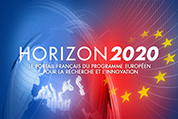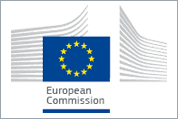ESR1.4: Marta PIENKOWSKAEfficient numerical modelling via “effective” media

Marta PIENKOWSKA: I graduated with a master's from Applied Mathematics both from University College London (UCL) and from the University of Pierre and Marie Curie (UPMC) in Paris, where I specialised in Numerical Analysis and PDEs. I then moved to the industry and worked for two software development companies, Dassault Systemes and COMSOL Multiphysics. In October 2015 I joined the department of Earth Sciences at the University of Oxford as a WAVES PhD candidate; I am now working with Tarje Nissen-Meyer on seismic wave propagation in complex media.
Main host institution:
Department of Earth Sciences, University of Oxford (Oxford, UK)
Supervisor:
Tarje Nissen-Meyer (tarjen @ earth.ox.ac.uk), James Rickett (JRickett @ slb.com), Johan Robertsson (johan.robertsson @ erdw.ethz.ch)
Secondment institution:
Laboratoire de Mécanique et d’Acoustique (LMA), CNRS (Marseille, France)
Objectives:
One of the most crucial challenges in numerical modelling of seismic and acoustic wave propagation lies in the complexity of the medium through which waves propagate. Yet, extremely complex structures can be modelled even with limited hardware, by finding an effective manner of capturing those wave effects that are actually relevant to a given application. For instance, the seismic exploration industry commonly separates the effects of transmission/volumetric properties (tomography, waveform inversion) from those of reflections (imaging, migration), although they are all associated with the same physical entities. The student will explore the "coupling" between discontinuity geometry and wavespeed in a given medium, determining, e.g., how a falsely placed discontinuity would map into imaging. He or she will then attempt to devise simplified propagation models (e.g. effective/homogenized media) that provide a sufficiently precise estimate of the sensitivity of waveform data to medium structure. Collaboration is envisaged with LMA on numerical aspects, and possible validation via laboratory data, and on UPMC on seismic data application (e.g., ambient noise).
Expected results:
- Evaluation of equivalence between discontinuity versus volumetric medium parameterizations;
- new software to model wave propagation via effective media: linear scattering, homogenized and axisymmetric media;
- new tomography software accounting for seismic sensitivity to complex media.
further information:
Also in the section
Key Facts
- Coordinated by Université Pierre et Marie Curie
- 15 participating partners
- 6 European countries and the USA
- 15 trained fellows
- Project budget: 3 227 952.96€
- Project duration: 4 years
- WAVES is a European project funded by the European Union’s Horizon 2020 research and innovation programme under the Marie Slodowska-Curie grant agreement n° 641943.
Contact
Coordinator:
Lapo Boschi (lapo.boschi @ upmc.fr)
Project Manager
Fanny Schultz (fanny.schultz @ sorbonne-universite.fr)



